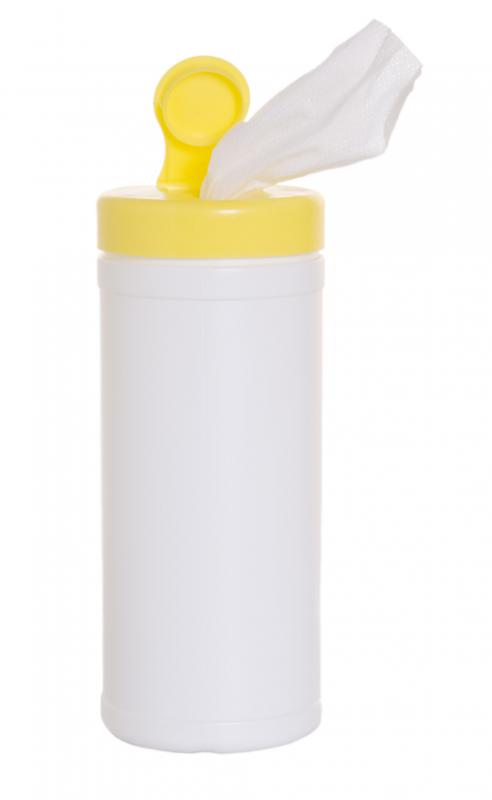At HomeQuestionsAnswered, we're committed to delivering accurate, trustworthy information. Our expert-authored content is rigorously fact-checked and sourced from credible authorities. Discover how we uphold the highest standards in providing you with reliable knowledge.
What are Disinfectants?
Disinfectants are substances which are capable of killing microorganisms. These substances are used to clean hospitals, clinics, and other medical facilities, along with bathrooms and kitchens. The goal behind the use of disinfectant is to reduce the number of microorganisms present on a surface like a counter or a floor, thereby decreasing the risk of contracting an infection. Many stores which stock housekeeping supplies carry household disinfectants, and medical suppliers carry stronger versions for use in medical facilities.
In most cases, a disinfectant cannot completely sterilize a surface, although it can eliminate a large number of microorganisms. Products which can sterilize must be used exactly as directed, and in a very controlled environment. Sanitizers, a closely related family of products, kill less microorganisms than disinfectants, but they are still more effective than simple soap and water. Antiseptics are products which are designed to be used on the skin, as for example in surgical preparation, while antibiotics are formulated for ingestion.

A variety of surfaces can be treated with disinfectants, including textiles, which can be washed in disinfectant solutions, along with floors, counters, and walls made from materials like wood, tile, glass, concrete, and so forth. The strength of a given disinfectant can be increased or decreased with the use of a diluting agent such as water; some disinfectants are designed to be diluted before use.

A wide variety of compounds can be used as disinfecting agents. Alcohols are quite common, as are oxidating agents like hydrogen peroxide, iodine, and bleach, along with phenolics. Many disinfectants are toxic to humans and pets, so they must be used carefully in order to avoid making someone sick, and disinfectants must also be used consistently and properly in order to be effective. Failure to follow protocol can result in leaving microorganisms behind in a clean environment which they can rapidly colonize.

In the home, using disinfectants can prevent the spread of disease between family members, and it can also reduce the risk of food borne illness in the kitchen. Because the pool of available microorganisms is relatively small, high-grade disinfectants are usually not necessary. At medical facilities, where large numbers of patients pass through with an assortment of infections, more serious disinfectants may be needed, especially since some visitors may have immune vulnerabilities.

Around the house, bleach is one of the best disinfectants available. It is highly effective, relatively easy to use, and safe when it is handled properly. It can be used to clean contaminated textiles as well as floors, sinks, and counters. It is also possible to purchase products designed specifically for disinfecting various household surfaces, although hospital-grade disinfectants are usually very expensive, and only available through specialty companies.
AS FEATURED ON:
AS FEATURED ON:















Discussion Comments
Please note that most disinfectants and sanitizers have poor cleaning properties, and should not be called a cleaner. Pre-cleaning the surface with soap and water is the most important step. Organic soils on surfaces can interfere with the disinfectant. Always read and follow the label directions of disinfectants or sanitizers.
Some products are combined cleaner/sanitizers. However, simply spraying and wiping will not sanitize in one step. Clean the surface to be treated first, then reapply the product and allow to dwell for the specified time. Some products will then require a clean water rinse. Again, read the label.
All disinfectants and sanitizers in the United States must be registered with the EPA as a pesticide product. If using bleach as a disinfectant or sanitizer, check that it has an EPA registration in order to be compliant with relevant health codes. Not all bleaches are registered.
Check the kill claims. For instance, if norovirus is going around, check that the product has norovirus listed on its label.
Remember too that dead bacteria remaining on a surface can become a rich source of food for other bacteria.
In any event, simply cleaning will be all that is necessary, and targeted disinfection or sanitizing will help reduce exposures to these often irritating substances.
And stay away from disinfecting wipes. They are an example of false peace of mind. These products tend to be misused. Most people quickly swipe the surface and call it "disinfected." However, reading the label will tell you that the surface needs to be pre-cleaned, then remain wet for between 30 seconds and 10 minutes--not very practical with a flimsy wipe on a large counter or table.
Ken the Janitor
Bleach is also a great disinfectant for dishes when used safely. The recipe is two teaspoons of bleach per gallon of water. Home brewers often use bleach to sterilize their equipment, bottles and anything else that will touch what will become an alcoholic beverage after going through the fermenting stage. There are specialized disinfecting agents available for brewers or anyone else wanting to sterilize equipment to be used in food preparation, but the "bleach water" method is safe, inexpensive and very effective.
Post your comments